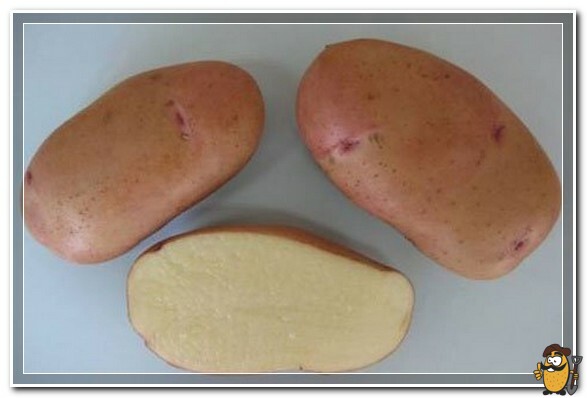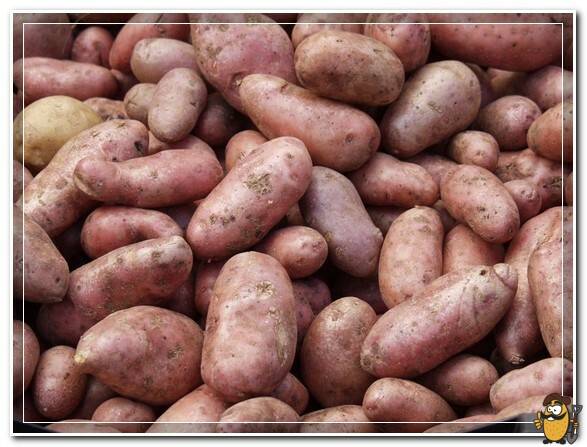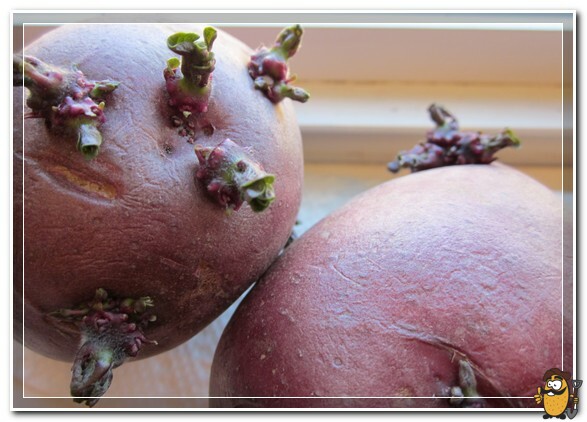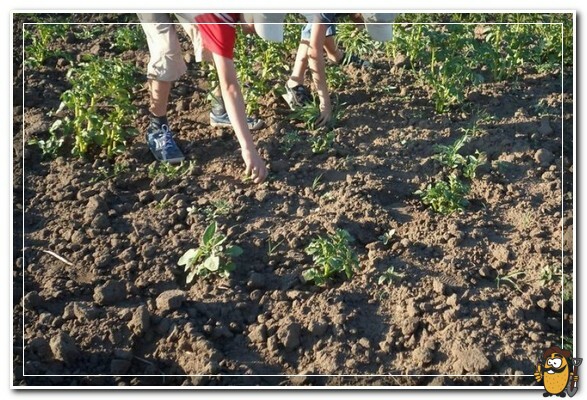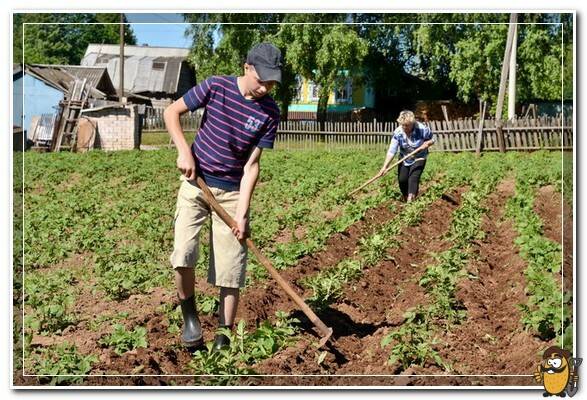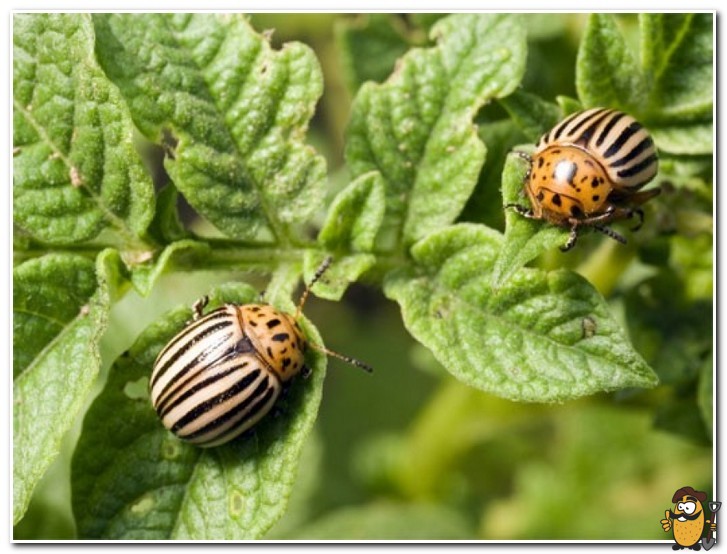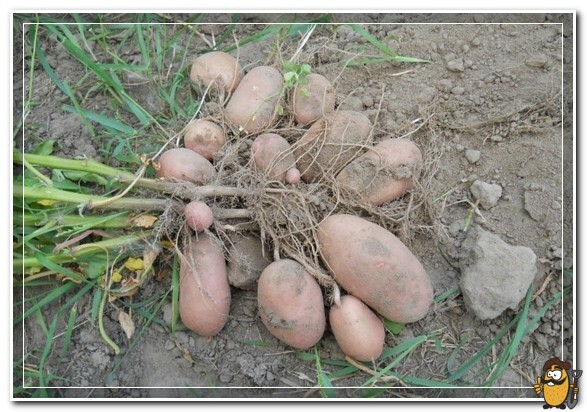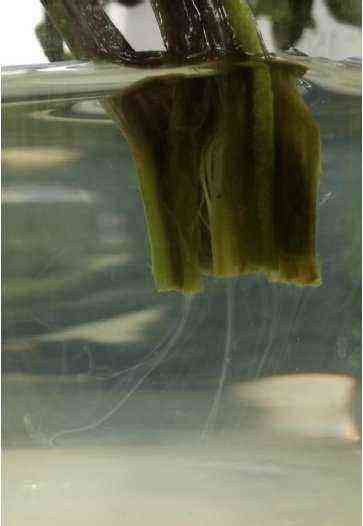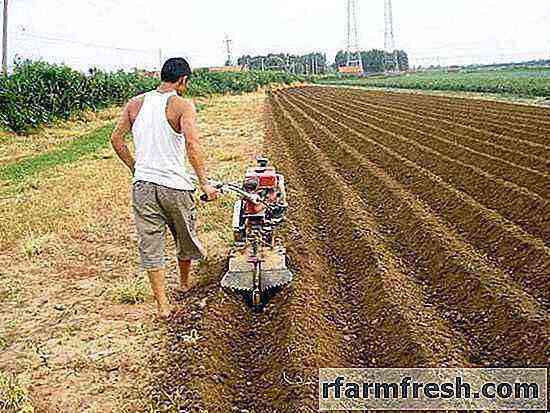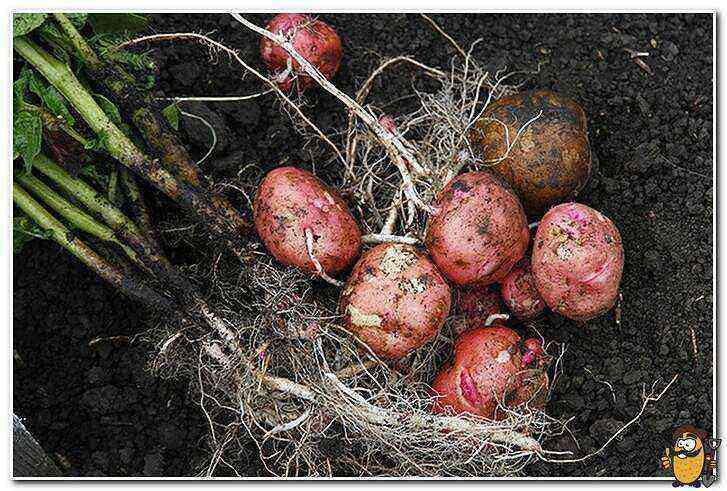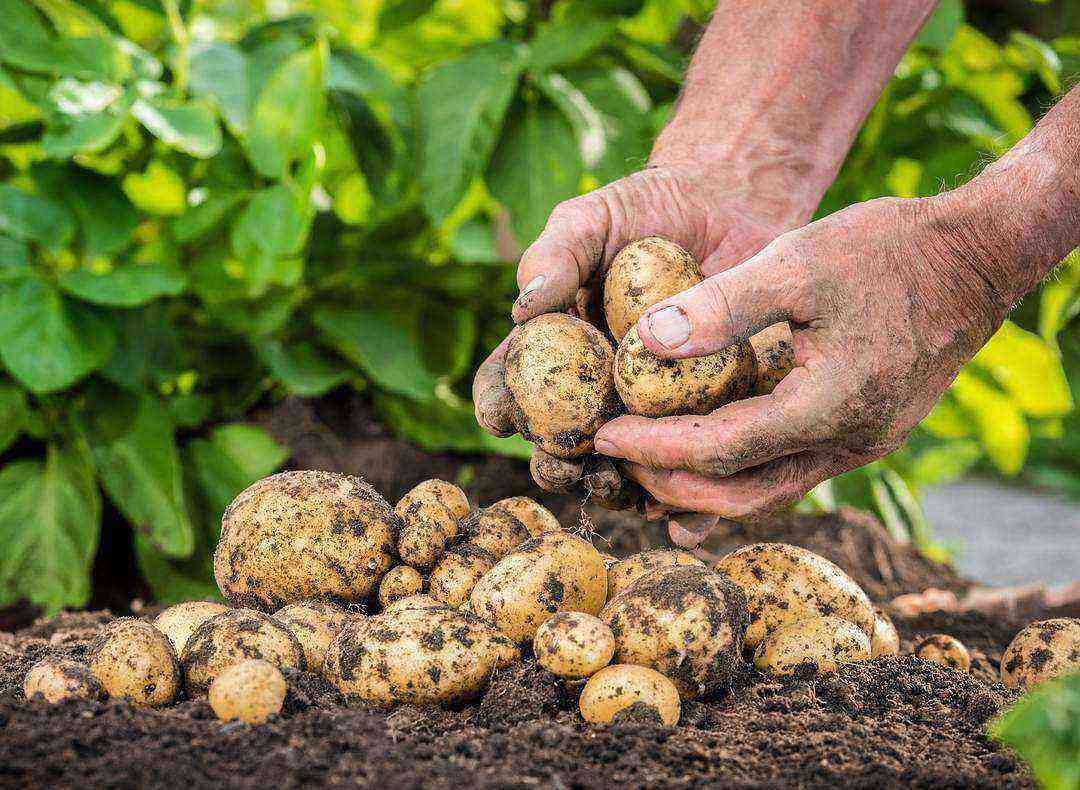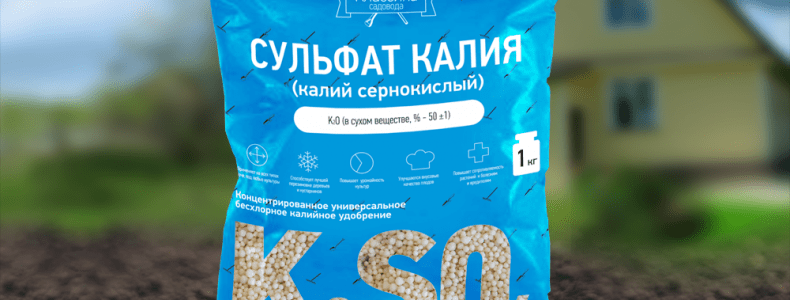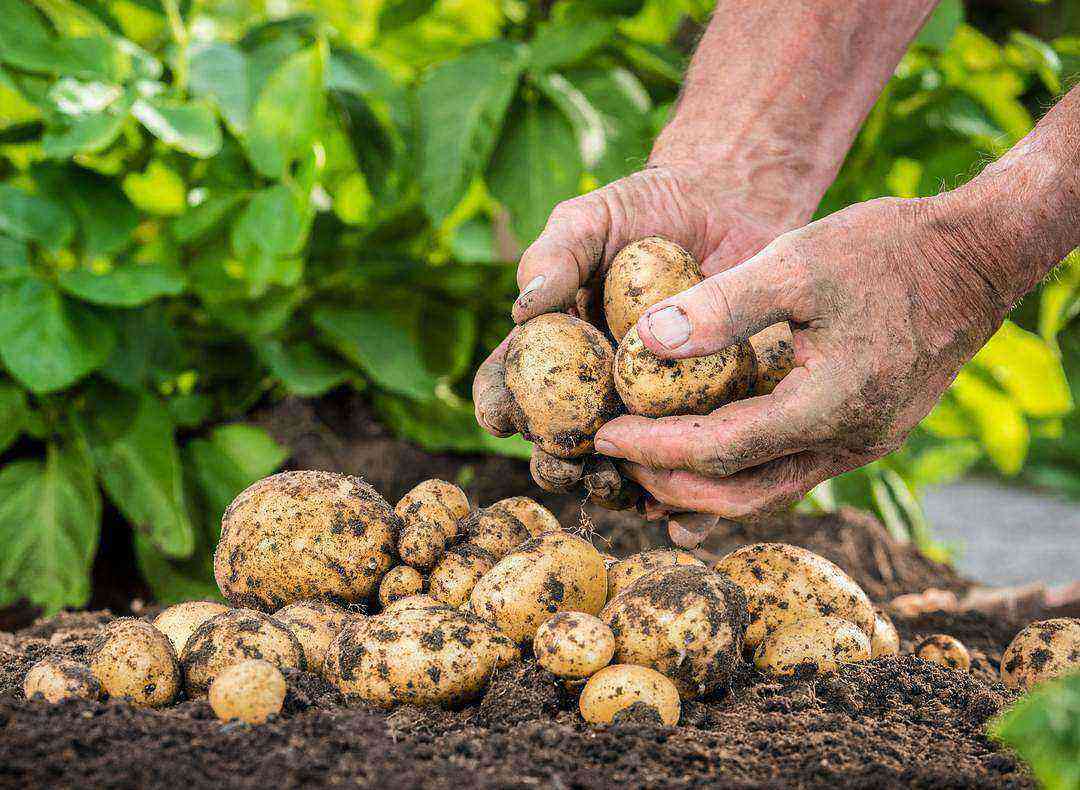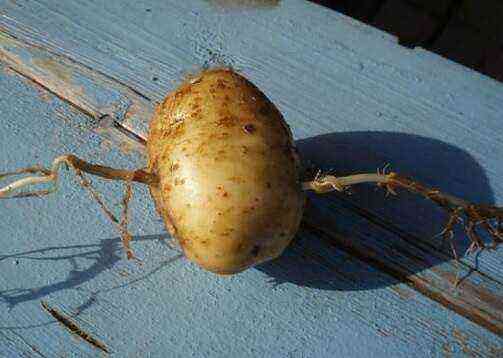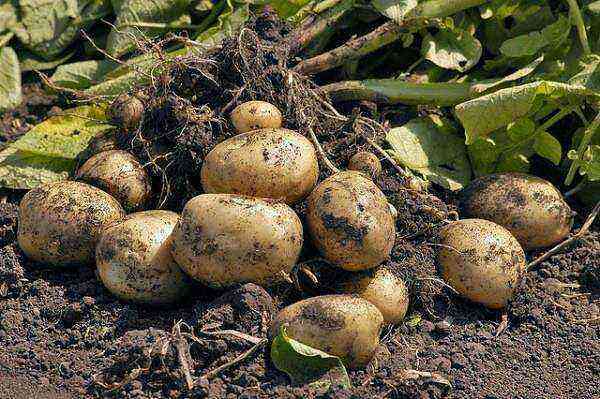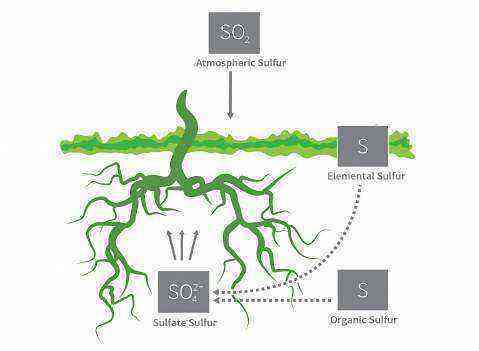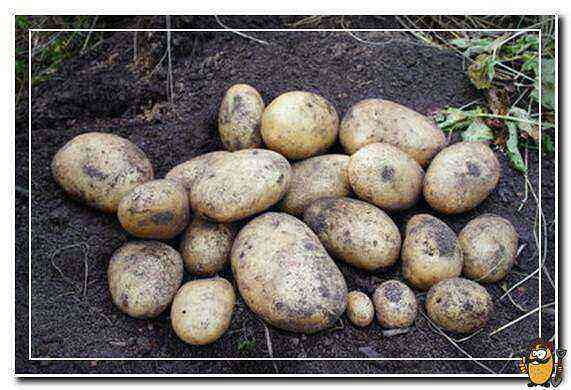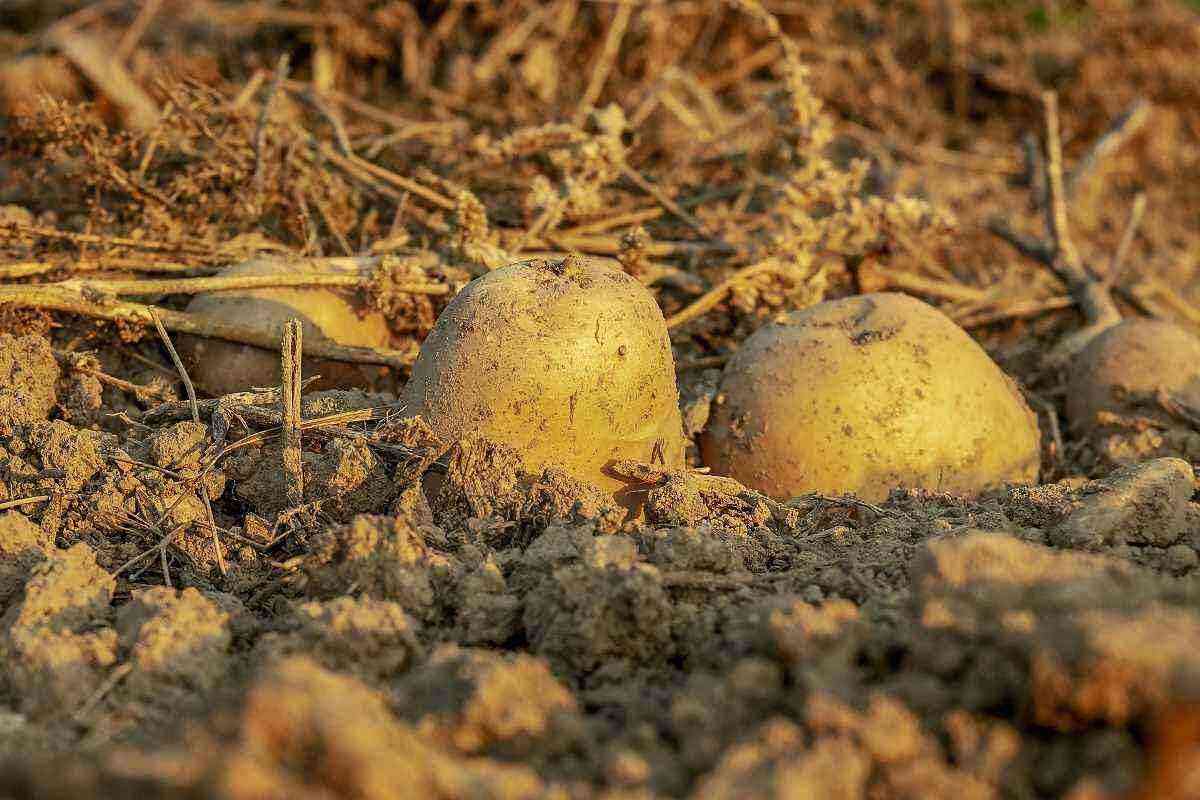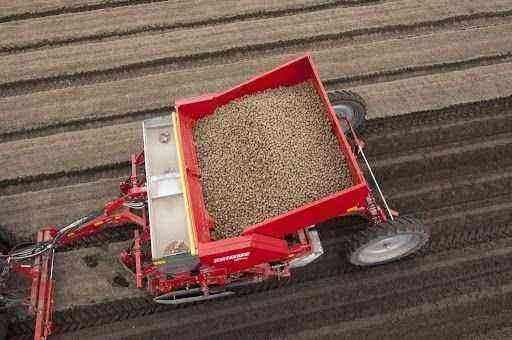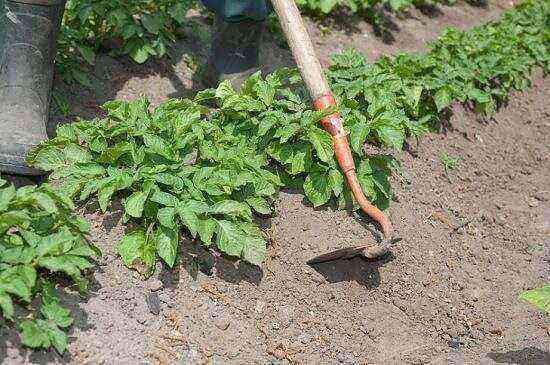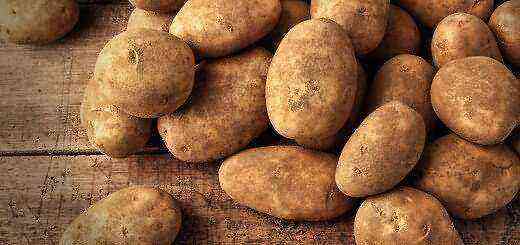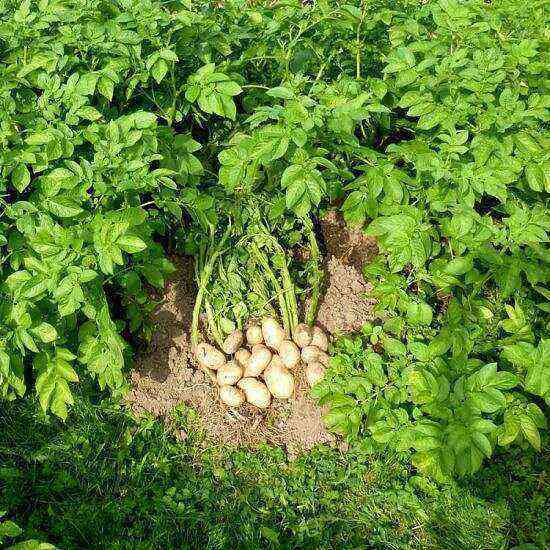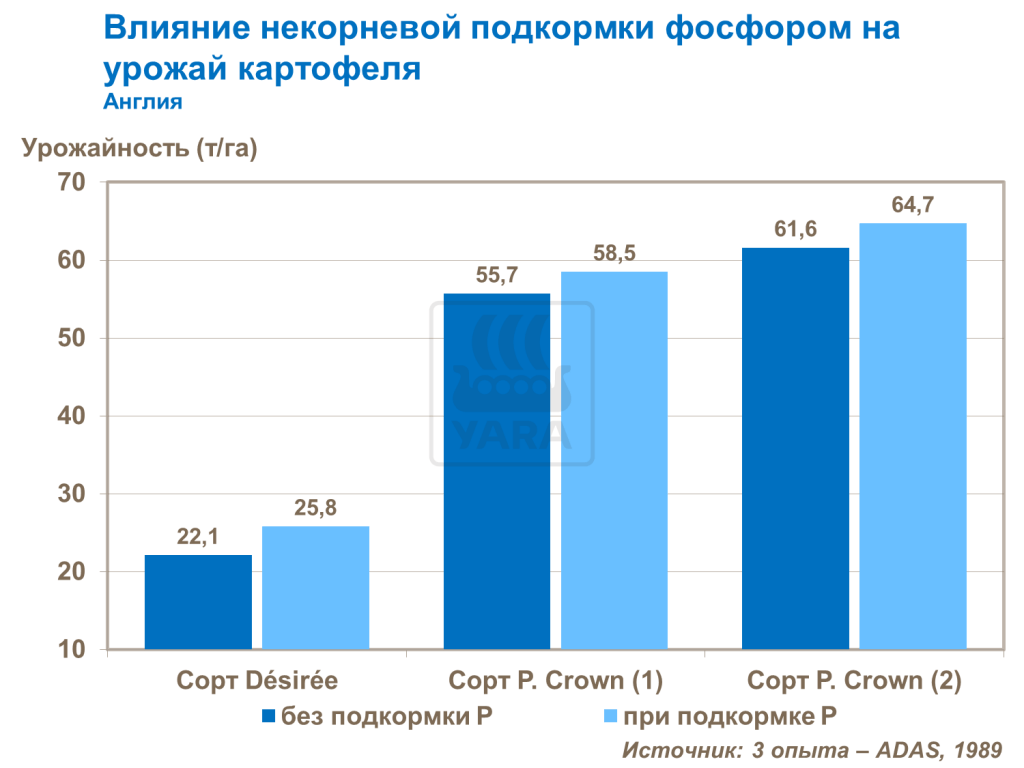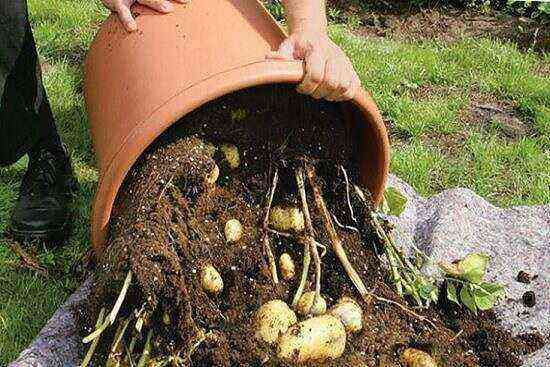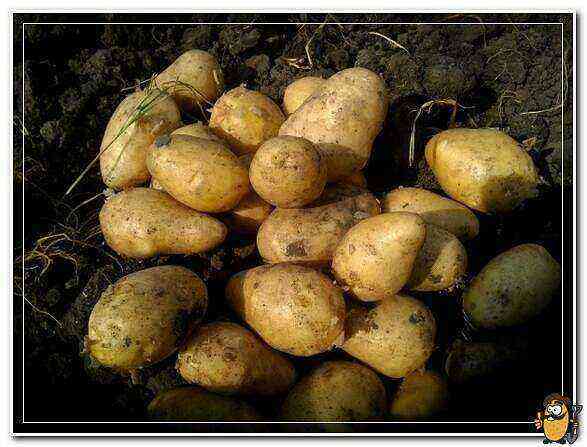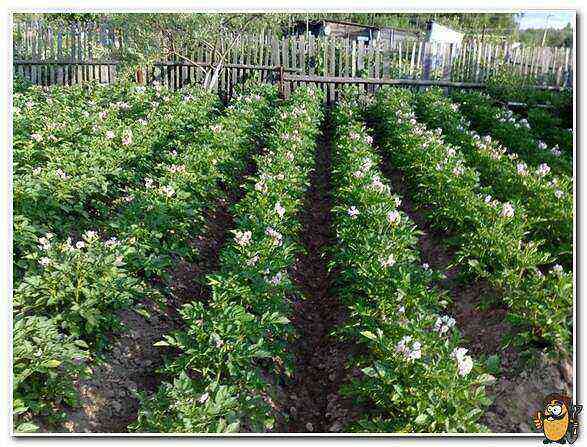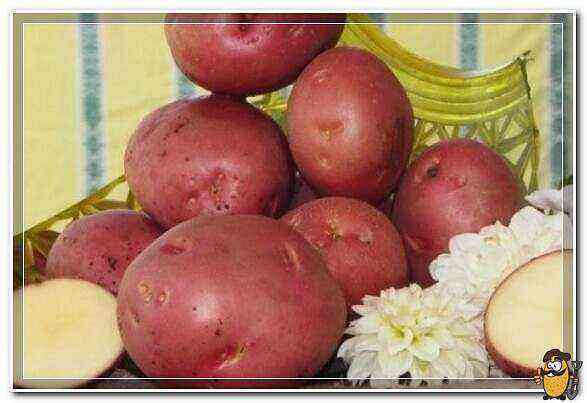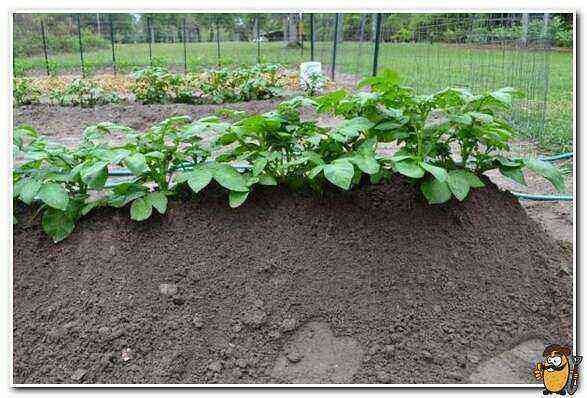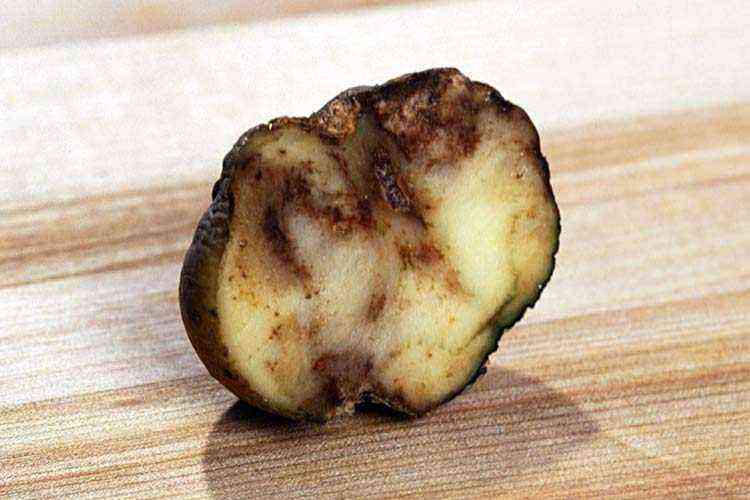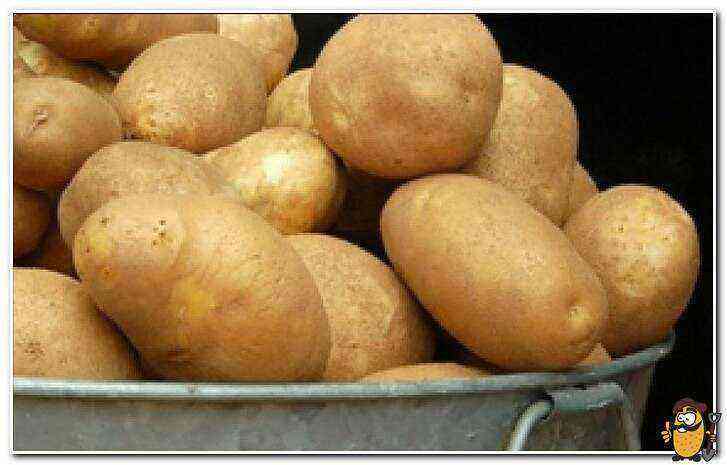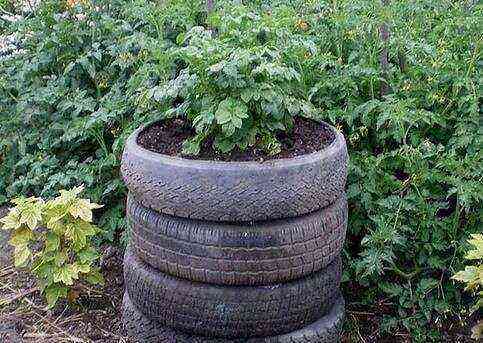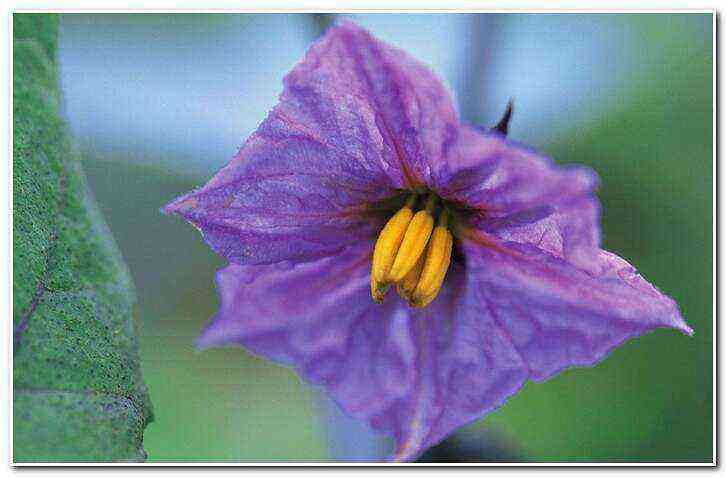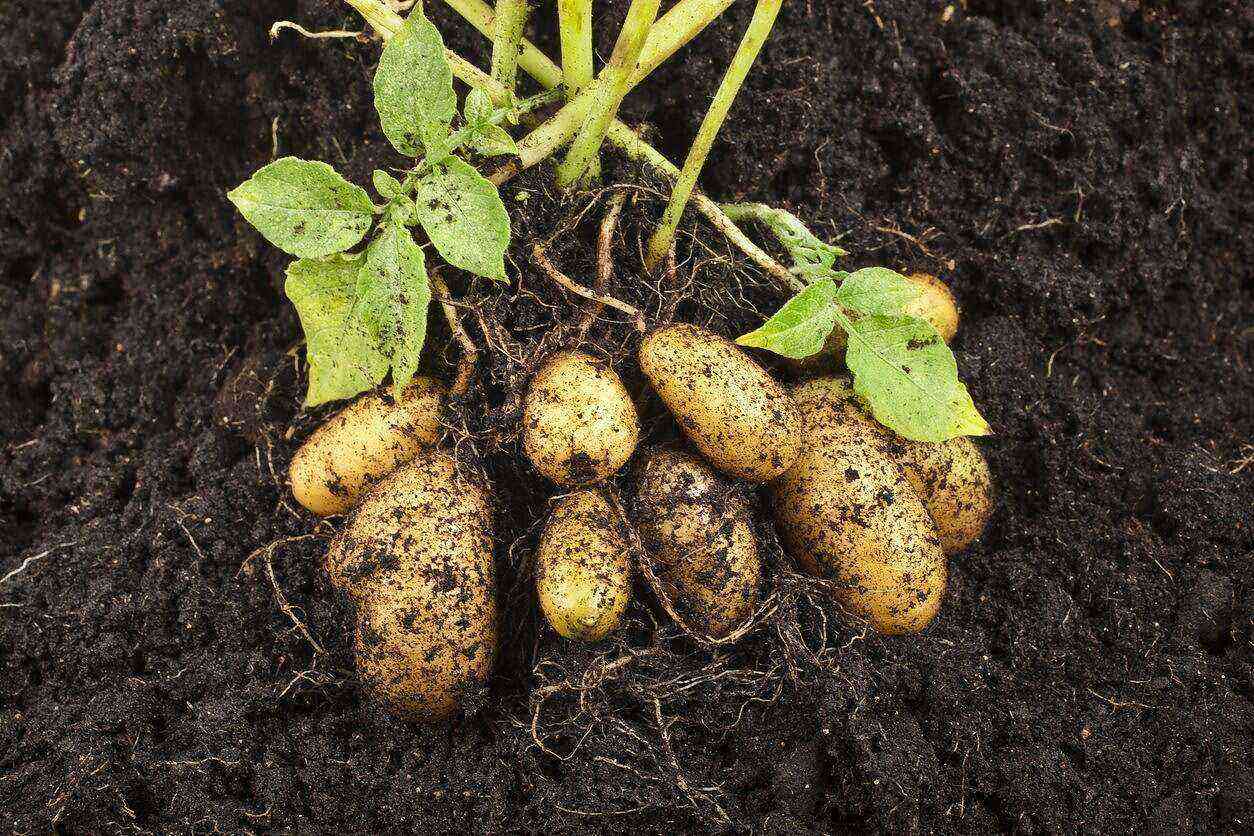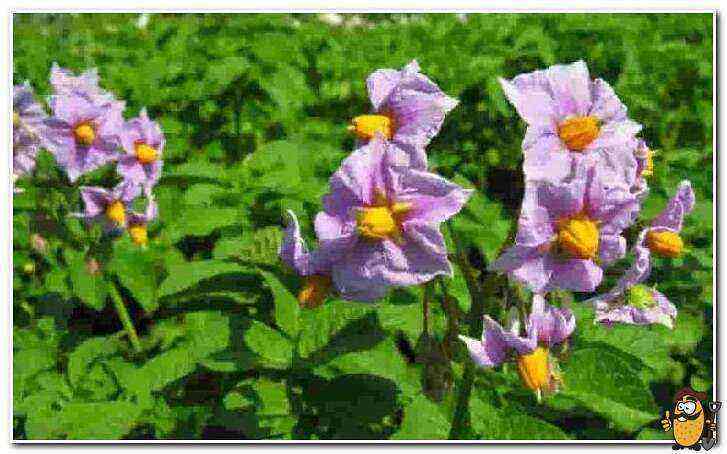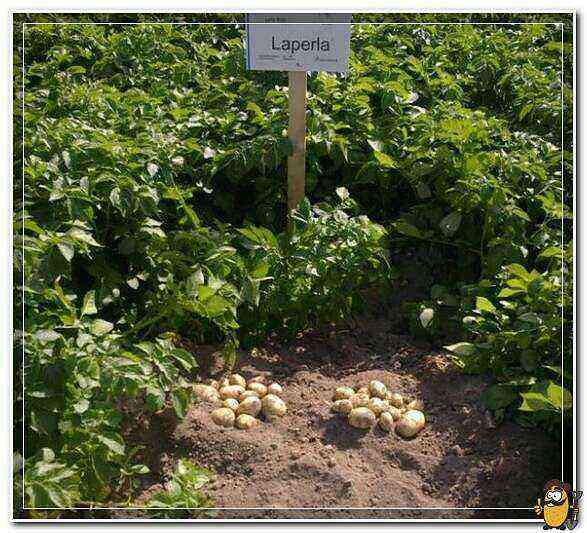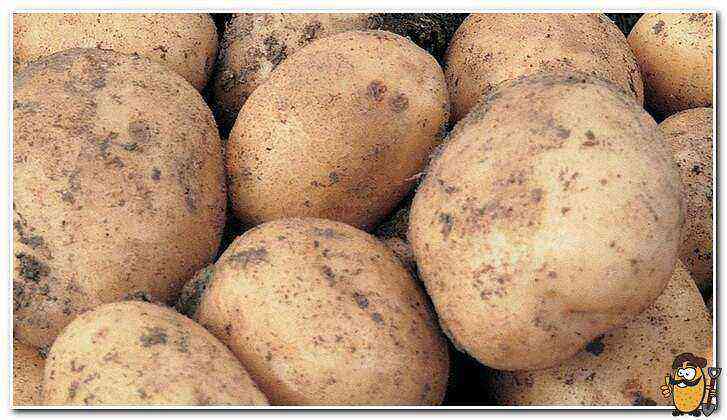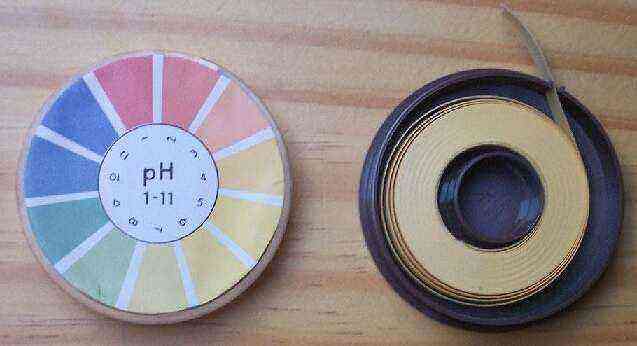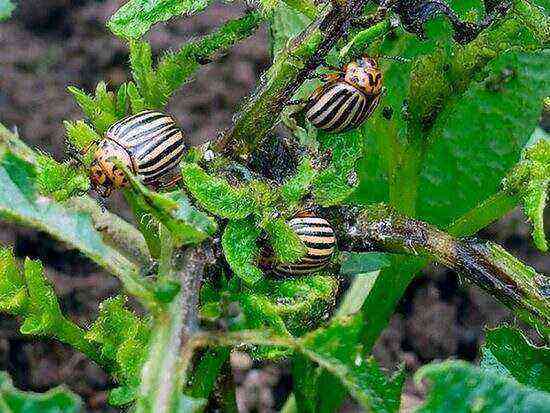The early ripe potato variety Tiras is very profitable to grow in regions with a warm climate, where you can get two harvests per season. It is successfully cultivated in almost all regions of our country, and reviews of the variety are only positive.
Tiras potatoes respond well to fertilizing, loves additional watering, gives high yields in open, well-lit areas. Today, many gardeners are betting on it.
Variety description
Tiras is an early table variety, which is the result of the work of Ukrainian breeders. They took him out at the very beginning of the 2000s, and already in 2004 he successfully passed all the tests and got into the State Register of the Russian Federation.
The variety pleases with a short ripening period of tubers, it lasts only 70-80 days. At the end of this period, the potatoes must be dug out so that they do not lie in the ground. You can try young juicy potatoes with a delicate skin already 45-50 days from the moment of planting.
Bushes near Tiras are of medium height, with thick fleshy stems. Compared to other varieties of potatoes, its bushes seem very lush due to the large number of leaves. The leaves are cast in a pleasant emerald hue. In shape, the leaf plate is elongated, the edges have small notches. The flowers are claret-lilac, rare. Stolons of moderate length, no more than 5 cm.
The yield of the variety depends on the growing region and weather conditions. With a favorable combination of circumstances, up to 460 centners of selected potatoes can be harvested from one hectare, while the minimum indicator is 210 centners / ha. On one bush, from 9 to 12 tubers with an average weight of 130 g are formed. This is a fairly high yield, thanks to which the variety has been in demand among farmers for almost 20 years.
Tiras is resistant to scab, nematode, potato crayfish and late blight. With proper agricultural technology, these diseases do not appear. Recommended for growing in woodlands, forest-steppe and steppe zones.
Characteristics of tubers
Tiras potatoes are different:
- oval, slightly elongated;
- smooth and even skin;
- the presence of a large number of shallow eyes;
- pink tinge of the peel;
- light flesh with a barely noticeable yellow tone;
- good digestibility;
- a fairly high starch content – up to 15%;
- excellent keeping quality – 93-94%.
Tiras potatoes have excellent taste, which directly depend on the percentage of starch. The table below shows the comparative characteristics of the varieties with the highest starch content.
Variety name
Starch content
Tiras
10-15%
Yanka
13-18%
Cast iron
12-15%
Santana
13-17%
Tuscany
12-14%
Sheri
11-15%
Openwork
14-16%
As you can see, Tiras belongs to those varieties whose tubers are best suited for culinary purposes: frying, boiling, baking, and so on.
Cultivation
Tiras is completely undemanding to soil, therefore it is grown throughout Russia. On soils with a poor nutrient composition, you can also get a good harvest if you adhere to all agrotechnical requirements. Another positive quality of the variety is drought resistance. It easily withstands prolonged dry periods.
To get two crops of this potato per season, you need to know some of the features of its cultivation. As mentioned above, technical ripeness occurs 70-80 days after planting the seed tubers. In cold regions, the harvest is harvested on 90 days. The active formation of tubers on the rhizome begins 2-2,5 weeks after planting, and young potatoes can be used for food as early as 45-55 days.
To get more friendly shoots and accelerate the formation of tubers, seed potatoes must be germinated. This can be done in different ways:
- sprinkle on the floor, after placing sawdust;
- spread out in wooden boxes in one layer;
- put in plastic bags with air holes;
- put in bags made from natural materials.
The main rule of germination is that the room should be light and warm (from 5 to 8 degrees). In such conditions, the sprouts do not stretch in length, they grow strong and healthy.
Seed potatoes are planted in the first half of May. In the southern regions of the country, gardeners can plant Tiras potatoes at the end of April, subject to warm weather.
The landing pattern is standard:
- hole depth – 8-10 cm;
- width between bushes – 30-35 cm;
- the distance between the rows is up to 65 cm.
For planting, it is advisable to take away illuminated areas of the garden, on which the soil warms up evenly. Legumes, winter crops, grains, perennial or annual grasses are considered ideal precursors for the crop.
Plant Care
Tiras potatoes are completely unpretentious in their care, but standard agrotechnical measures cannot be dispensed with. At an early stage of cultivation, it is necessary to deeply loosen the row spacings. This will allow young plants to quickly break through the soil, ensure the unity of the seedlings. Loosening is also carried out in parallel with the removal of weeds.
It is best to sprinkle potatoes after rain or watering. For these purposes, both the old-fashioned tool – a hoe (in small areas), and more efficient modern hillers are used. It must be remembered that hilling is carried out no earlier than young plants reach 15 centimeters in height. This technique should be repeated after about a couple of weeks. During this time, piles of earth that have not yet compacted under the bushes can be washed away by rain or dispelled by the wind.
During active flowering, a future crop is formed on the roots. The size and weight of potatoes depend on moisture, therefore, during the flowering period, plants need systematic but moderate watering. Especially if it hasn’t rained for a long time. At the same time, it is important not to overmoisten the soil under the potatoes, because a humid environment provokes the appearance of rot, which can destroy a significant part of the crop.
The Tiras variety responds well to feeding. Experts recommend applying fertilizer three times per season. Preference should be given to rotted manure, chicken droppings, potash and nitrogen fertilizers.
Many gardeners practice mulching potato beds after planting. Sawdust or dry grass is suitable for these purposes. Mulch prevents the formation of soil crust, does not allow weeds to germinate, retains moisture, protects plantings from sunlight and drying winds. Mulching eliminates the need for weeding and hilling.
Diseases and pests
Tiras is resistant to many common diseases. It has good immunity to nematodes, potato crayfish, late blight, and is also highly resistant to common scab. But there are other enemies of culture, such as fusarium, blackleg, Alternaria and others. Chemicals help to get rid of them. If nothing is done, any of the listed diseases can cause significant damage, lead to the loss of a significant part of the crop. That is why the problem must be eliminated when the first signs appear, and it is even better to insure yourself and take preventive measures.
Various insects love to feast on potato tops and tasty tubers. Plants can be attacked:
To protect the planting from the invasion of insects, the seed should be treated with special preparations. Bushes are treated in the presence of visible pests. For these purposes, both store products and folk remedies are suitable.
Harvest
Compared to many other potato varieties, Tiras has a fairly high yield. This can be seen in the comparison table below.
Variety name Yield Tiras 210-460 c / ha Elmundo 250-345 c / ha League 210-360 c / ha Mozart 200-330 c / ha Queen Anna 390-450 c / ha Code 180-400 c / ha
The harvest begins after the onset of technical ripeness. For this variety, this occurs 70-80 days from the moment of planting. Ripeness is determined by the state of the ground part. If the tops are bent to the ground and dry, you can start harvesting. To collect potatoes, use a shovel, pitchfork or special technical devices.
The dug tubers are scattered on the ground to dry. They dry for at least 2 hours, and if the potatoes were extracted from damp soil, then it is worth keeping them in the sun a little longer. After the potatoes dry, soil residues can be easily removed from them.
Sorting potatoes is another important step. Spoiled specimens that have suffered from pests or were accidentally cut with a shovel are immediately discarded. Large high-quality potatoes are placed in nets or bags made of natural fabric to be sent for storage. Medium tubers can be left to be used as seed for the next season. Small potatoes will be used for livestock feed or for starch processing.
After drying and sorting, the crop can be sent to storage. The Tiras variety has good keeping quality. The comparison table is shown below.
Variety name
Keeping
Tiras
93%
Mozart
92%
Queen Anna
92%
Liga
93%
Agata
93%
Felox
90%
In conclusion
Tiras potatoes received a lot of approving reviews not only from gardeners who cultivate it in their small plots, but also from workers on large farms. Primarily due to the fact that it can be grown twice a season. In addition, the tubers of this variety have excellent taste, they are good for both home cooking and restaurant. It remains only to thank the specialists of the Polesie experimental station of the IC NAAN for the opportunity to enjoy the taste of this magnificent potato.

